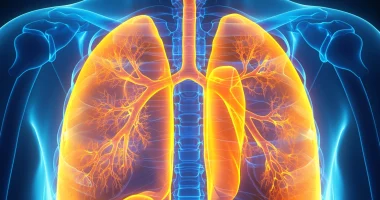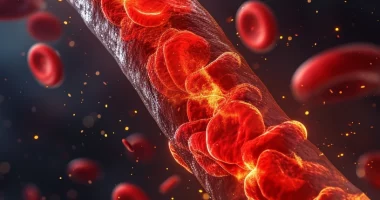Bowel cancer
What is Bowel cancer?
Bowel cancer is an oncological pathology in which a malignant tumor forms in sections of the small or large intestine. This type of cancer is considered one of the most common. This pathology is faced by about 10 people per 100 thousand people. More often, the disease is detected in men (in second place after lung cancer) and somewhat less often in women (in frequency follows breast and cervical cancer).
This prevalence is due to the difficulty of early diagnosis. The human intestine is distinguished by its long length; the tumor can occur anywhere. More often, malignant degeneration affects the epithelial cells of the large intestine. In its natural curves, there is a regular stagnation of fecal matter, traumatization of the membranes, and exposure to harmful substances, which are predisposing factors.
Bowel cancer develops in several stages—the most favorable prognosis for patients diagnosed with tumors at stage zero or stage one. Zero is characterized only by dysplasia and active cell division. They are not yet malignant at this stage, but they become so in about a third of cases. In the first stage, symptoms are entirely absent because the tumor is still too small, does not squeeze the surrounding structures, and affects the superficial layers of the intestinal walls. At this time, the patient may notice an increase in the frequency of stools.
Starting from stage 2, profound tumor growth is observed, and metastasis is possible. The clinical picture is pronounced but is often written off as other diseases. Often, patients try to treat their ailments with folk remedies. At the 3-4th stage, the size of the tumor is impressive, intestinal obstruction is possible, adjacent organs are affected, and atypical cells get into the lymph nodes and can be detected throughout the body.
Symptoms of bowel cancer
Signs of intestinal cancer are nonspecific and are manifested in a variety of other intestinal pathologies. The disease’sclinical picture depends on the tumor’s localization, the degree of malignant process, the morphological type of neoplasm, and the degree of involvement of other organs in pathological changes. Intestinal cancer is characterized by the appearance of vivid symptoms only at late stages, which further complicates diagnosis and treatment. The main manifestations of the disease are:
- weakness, rapid fatigue;
- lack of appetite, aversion to meat, weight loss;
- stool instability (diarrhea alternates with constipation);
- impurities in the feces (blood, mucus, pus);
- subfebrile body temperature;
- aching or cramping abdominal pain.
Small bowel cancer is characterized by dyspeptic disorders (heaviness, belching, heartburn, bloating), pain more often localized in the upper half of the abdomen, stools first become dark, then blood is found in them. Large intestine cancer is characterized by constipation, fecal discharge with mucus or pus, constant bloating, incontinence of gases, and then feces.
Causes of bowel cancer
At present, there is only speculation about the etiology of bowel cancer. The main provoking factors are considered to be:
- genetic predisposition;
- celiac disease;
- chronic infectious and inflammatory diseases of the GI tract;
- irrational diet;
- exposure to unfavorable external factors (smoking, radiation, contact with carcinogens).
People with benign intestinal tumors are at increased risk. Without proper treatment, polyps can degenerate and form tumors.
Diagnosis of bowel cancer
The examination begins with interviewing the patient and a palpatory abdomen examination. Laboratory tests (blood, urine, coprogram, stool analysis for hidden blood, and tests for oncomarkers) are also prescribed.
Visualization methods play a unique role in the diagnosis of intestinal cancer. Esophagogastroduodenoscopy is performed to study the state of the small intestine, and colonoscopy, and rhinoscopy are performed to study the large intestine.
In modern clinics, these diagnostic procedures can be performed with medication sedation, simplifying the examination for patients and physicians.
During endoscopic examinations, it is possible not only to study in detail the condition of the intestinal membranes but also to take a biopsy for histological examination and to establish a final diagnosis based on its results. MRI is used for a detailed study of the tumor and its structure. To assess the condition of other internal organs, ultrasound, CT, or MRI diagnostics are prescribed.
Bowel cancer treatment
Bowel cancer at any stage can be treated. The chances of recovery are high in the early stages of the disease. At later stages, the number of cured patients does not exceed 5%. The key to success is early contact with the doctor and treatment by the tumor’s morphological features and the patient’s general condition.
Surgical intervention in the early stages allows the intestinal function to be fully preserved. Only the tumor and adjacent parts of the intestine are removed, the tissues fuse, and the organ resumes functioning over time. With impressive tumor size or multiple lesions, it is necessary to remove a significant portion of the intestine. In this case, doctors remove the free part of the intestine through the abdominal wall (colostomy), which is uncomfortable for the patient.
Chemotherapy and radiation are more often combined with surgical methods. In isolation, each of these methods is used for inoperable tumors to slow the growth of the neoplasm and the spread of atypical cells throughout the body.
All these treatment options are available in 850 hospitals worldwide (https://doctor.global/results/diseases/bowel-cancer). For example, Hartmann’s operation is performed in 25 clinics across Turkey for an approximate price of $6.8 K(https://doctor.global/results/asia/turkey/all-cities/all-specializations/procedures/hartmanns-operation).
Recovery and Rehabilitation
Recovery varies:
- Post-surgery recovery includes hospital stay and monitoring.
- Chemotherapy and radiation therapy have side effects that need management.
- Dietary changes and physical activity are important for recovery.
Complications and Challenges
Managing complications such as bowel dysfunction, ostomy care, and emotional and psychological impacts is vital.
Prevention
Preventive measures include regular screenings, a healthy diet, physical activity, limiting alcohol, and quitting smoking.
Advancements in Treatment
Recent advancements include more effective chemotherapy regimens, targeted therapies, and minimally invasive surgical techniques.
Living with Bowel Cancer
Living with bowel cancer involves ongoing management, lifestyle adjustments, and regular follow-ups.
Conclusion
Bowel cancer is a significant health challenge, but with early detection and advanced treatments, outcomes have improved. Awareness, regular screenings, and healthy lifestyle choices are key to prevention and early detection. Ongoing research continues to offer hope for even more effective treatments in the future.




